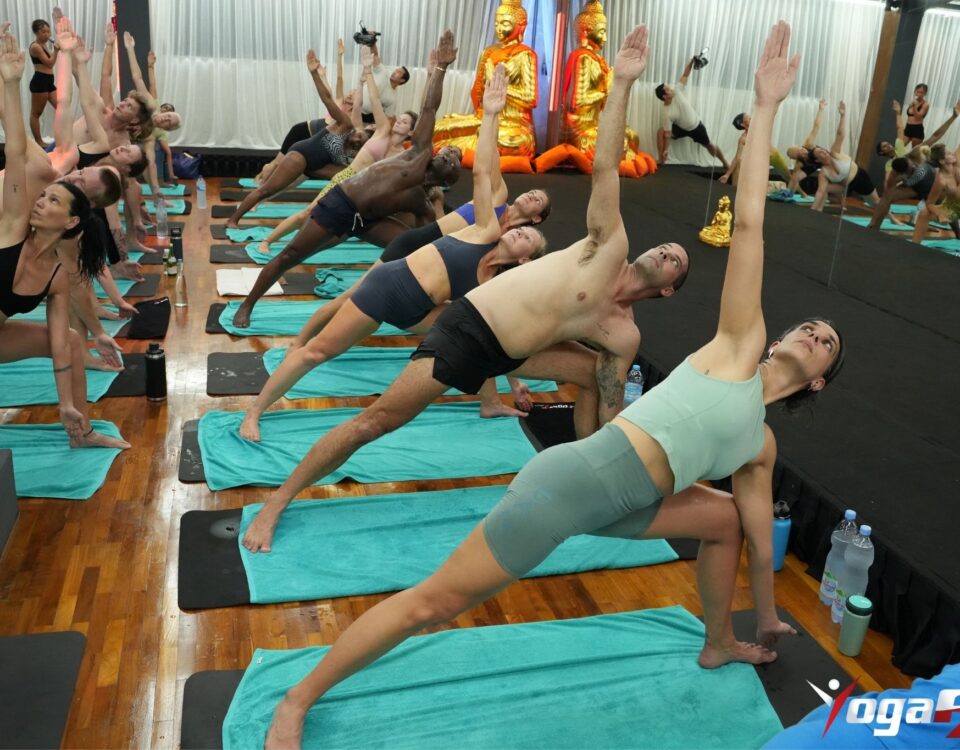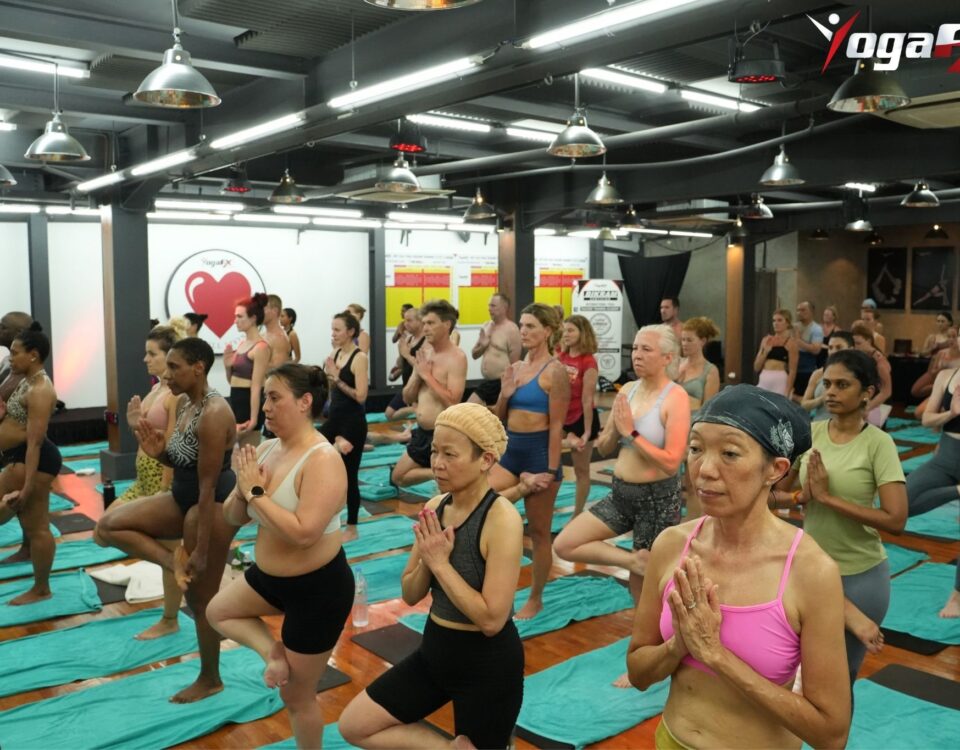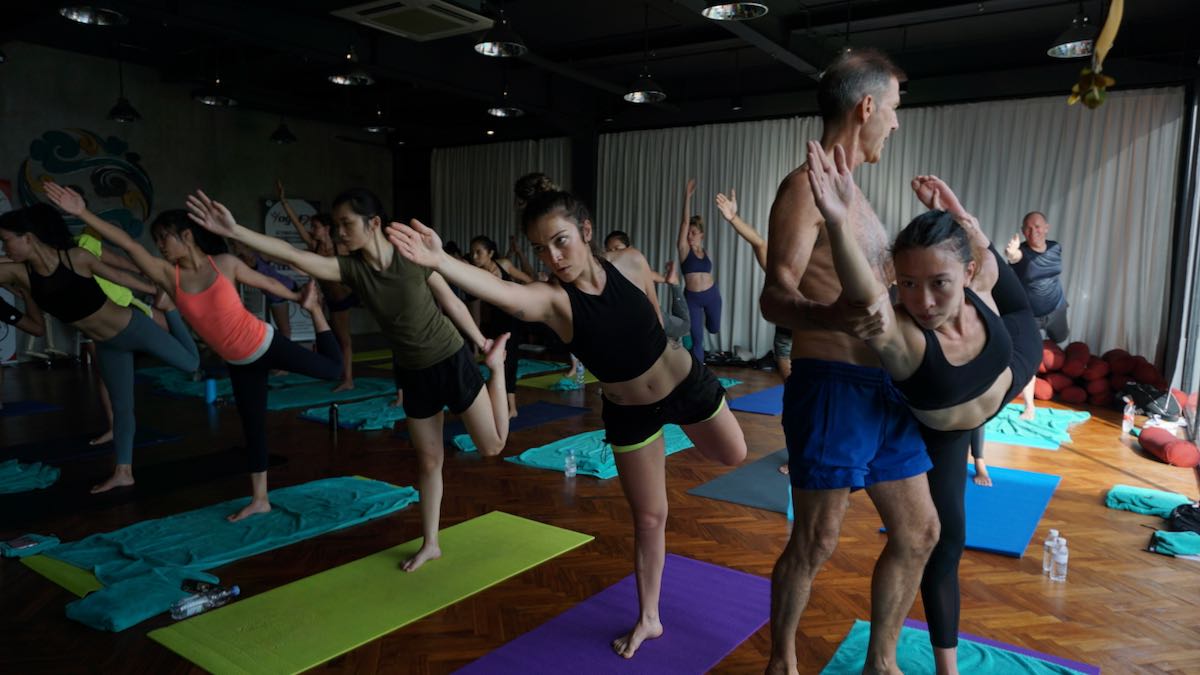
Original Hot Yoga, often referred to as Bikram Yoga, is a distinctive style of yoga that has gained global popularity since its development in the 1970s. Created by Bikram Choudhury, this practice is known for its rigorous sequence of 26 postures and 2 breathing exercises performed in a heated room.
The consistency of the sequence and the challenging environment are designed to provide a comprehensive workout for both the body and mind. This article will explore the history, key elements, benefits, and controversies surrounding Original Hot Yoga.
The History of Original Hot Yoga

The origins of Original Hot Yoga can be traced back to Bikram Choudhury, an Indian yoga teacher who developed the practice in the early 1970s. Choudhury, a disciple of renowned yoga master Bishnu Ghosh, adapted traditional hatha yoga techniques into a structured sequence that could be easily taught and practiced worldwide. By heating the room to approximately 105°F (40.6°C) with a humidity level of 40%, he aimed to replicate the climate of India, making the practice more effective and transformative.
Choudhury opened his first yoga studio in California, where the practice quickly gained a following among celebrities and athletes. The combination of physical intensity, mental discipline, and the promise of detoxification through sweating attracted a diverse range of practitioners. Over the years, Bikram Yoga studios have opened across the globe, making it one of the most recognizable forms of hot yoga today.
Key Elements of Original Hot Yoga

Original Hot Yoga is distinguished by several key elements that define its practice. Understanding these elements is essential for appreciating the unique aspects of this yoga style and the benefits it offers.
Fixed Sequence of Postures
Original Hot Yoga is distinguished by its fixed sequence of 26 postures and 2 breathing exercises. This consistency allows practitioners to monitor their progress over time and develop a deep understanding of each posture. The sequence is designed to systematically work every part of the body, ensuring a balanced and comprehensive workout.
Heated Environment
The practice takes place in a room heated to approximately 105°F (40.6°C) with a humidity of 40%. The heat serves multiple purposes: it helps to warm up the muscles quickly, increases flexibility, and promotes sweating, which is believed to aid in detoxification. The heated environment also challenges the cardiovascular system, enhancing endurance and stamina.
Duration
Each Original Hot Yoga class lasts for 90 minutes. This duration allows sufficient time to perform the full sequence of postures and breathing exercises, ensuring that practitioners receive the maximum benefits from the practice.
Breathing Exercises (Pranayamas)
The practice begins with a standing deep breathing exercise (Pranayama series) and ends with a seated breathing exercise (Kapalbhati in Vajrasana). These breathing exercises are designed to increase lung capacity, oxygenate the blood, and prepare the body for the physical demands of the postures.
The 26 Postures and Their Benefits
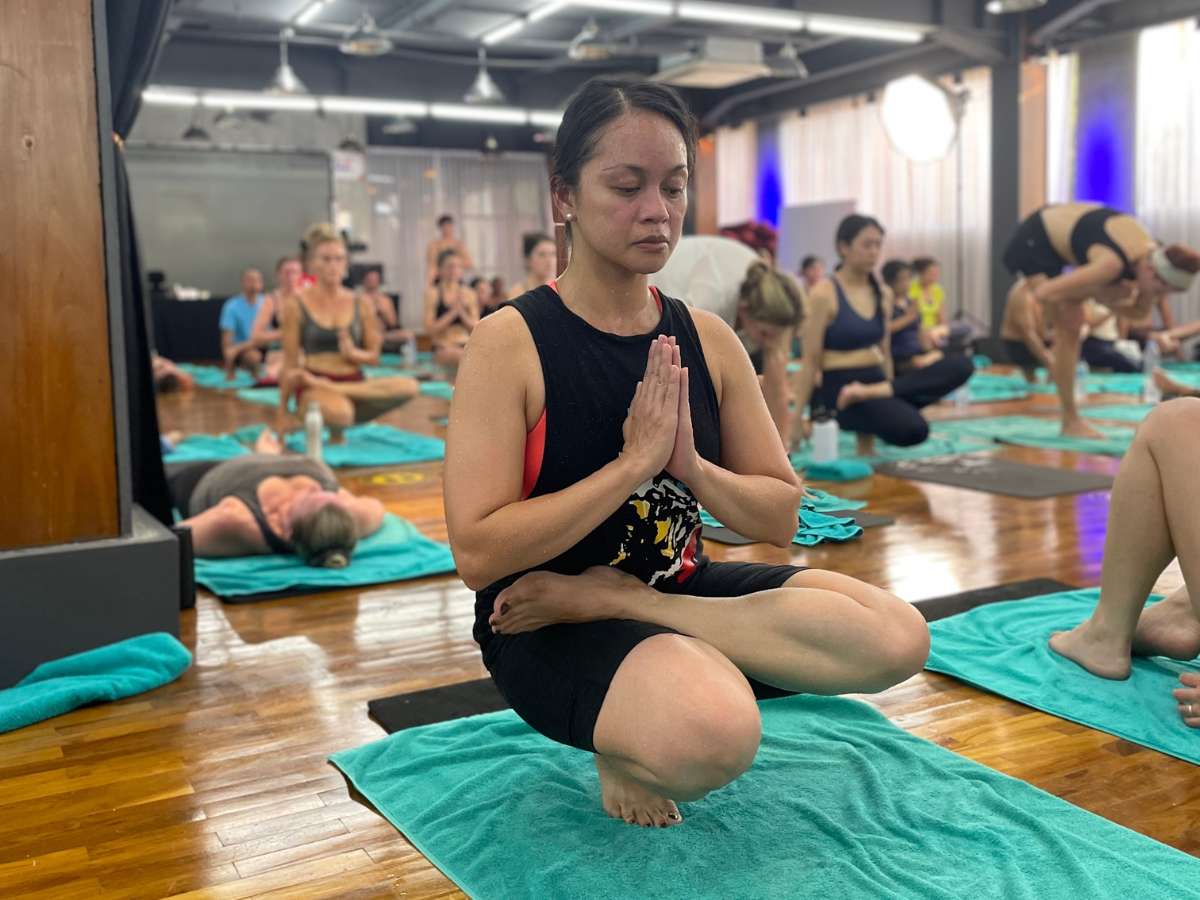
Understanding the 26 postures and their benefits is crucial for practitioners to fully appreciate the physical, mental, and emotional advantages of Original Hot Yoga. Each posture is designed to target specific areas of the body, providing a holistic approach to health and wellness.
Original Hot Yoga Standing Series
- Standing Deep Breathing (Pranayama). Increases lung capacity and prepares the body for the practice. This exercise helps to oxygenate the blood and improve respiratory function, setting a strong foundation for the physical demands of the sequence.
- Half Moon Pose (Ardha-Chandrasana) with Hands to Feet Pose (Pada-Hastasana). Stretches and strengthens the spine and muscles of the torso. It improves flexibility in the spine and helps to tone the abdominal muscles, enhancing overall core strength.
- Awkward Pose (Utkatasana). Tones the thighs and improves posture. This posture strengthens the muscles of the legs, hips, and buttocks, and can help to improve balance and coordination.
- Eagle Pose (Garurasana). Enhances balance and strengthens the legs and hips. It also stretches the shoulders, upper back, and improves focus and concentration.
- Standing Head to Knee (Dandayamana-Janushirasana). Improves balance and stretches the hamstrings. This posture strengthens the core muscles, improves mental focus, and enhances flexibility in the legs.
- Standing Bow Pulling Pose (Dandayamana-Dhanurasana). Opens the chest and strengthens the legs. It improves balance, coordination, and increases flexibility in the spine and shoulders.
- Balancing Stick Pose (Tuladandasana). Increases cardiovascular endurance and balance. This posture strengthens the muscles of the legs, hips, and core, and improves overall body alignment.
- Standing Separate Leg Stretching Pose (Dandayamana-Bibhaktapada-Paschimotthanasana). Stretches the spine and legs. It enhances flexibility in the hamstrings and calves, and helps to relieve tension in the lower back.
- Triangle Pose (Trikonasana). Provides a full-body stretch and strengthens multiple muscle groups. This posture improves flexibility in the hips and shoulders, tones the legs, and promotes overall body balance.
- Standing Separate Leg Head to Knee Pose (Dandayamana-Bibhaktapada-Janushirasana). Stretches the hamstrings and spine. It enhances flexibility in the legs, strengthens the abdominal muscles, and improves digestion.
- Tree Pose (Tadasana). Improves posture and balance. This posture strengthens the muscles of the legs and improves focus and concentration.
- Toe Stand (Padangustasana). Enhances concentration and balance. It strengthens the muscles of the legs and feet, and improves flexibility in the hips.
Original Hot Yoga Floor Series
- Corpse Pose (Savasana). Allows the body to rest and integrate the benefits of the practice. This posture promotes deep relaxation and mental clarity.
- Wind-Removing Pose (Pavanamuktasana). Massages the internal organs and relieves digestive issues. It improves flexibility in the hips and lower back, and helps to release tension in the abdomen.
- Sit-Up. Strengthens the abdominal muscles and stimulates the circulatory system. This exercise improves core strength and enhances overall body awareness.
- Cobra Pose (Bhujangasana). Strengthens the spine and stretches the chest and shoulders. It improves flexibility in the upper back and enhances overall posture.
- Locust Pose (Salabhasana). Strengthens the spine, legs, and arms. This posture improves flexibility in the lower back and helps to tone the muscles of the buttocks.
- Full Locust Pose (Poorna-Salabhasana). Increases strength and flexibility in the spine and legs. It enhances overall body alignment and improves mental focus.
- Bow Pose (Dhanurasana). Opens the chest and improves spinal flexibility. This posture strengthens the muscles of the back and improves overall body balance.
- Fixed Firm Pose (Supta-Vajrasana). Stretches the thighs and hips and improves knee flexibility. It enhances overall body alignment and promotes relaxation.
- Half Tortoise Pose (Ardha-Kurmasana). Relieves tension in the neck and shoulders and increases flexibility in the hips and lower back. It promotes mental clarity and relaxation.
- Camel Pose (Ustrasana). Stretches the entire front of the body and improves spinal flexibility. This posture enhances overall body alignment and promotes deep breathing.
- Rabbit Pose (Sasangasana). Stretches the spine and relieves tension in the back and neck. It improves flexibility in the upper back and promotes relaxation.
- Head to Knee with Stretching Pose (Janushirasana with Paschimottanasana). Stretches the hamstrings and spine and stimulates the digestive system. This posture enhances flexibility in the legs and improves overall body balance.
- Spine Twisting Pose (Ardha-Matsyendrasana). Increases spinal flexibility and improves digestion. It enhances overall body alignment and promotes mental clarity.
- Blowing in Firm Pose (Kapalbhati in Vajrasana). Improves lung capacity and cleanses the respiratory system. This exercise promotes mental clarity and enhances overall respiratory function.
Benefits of Original Hot Yoga
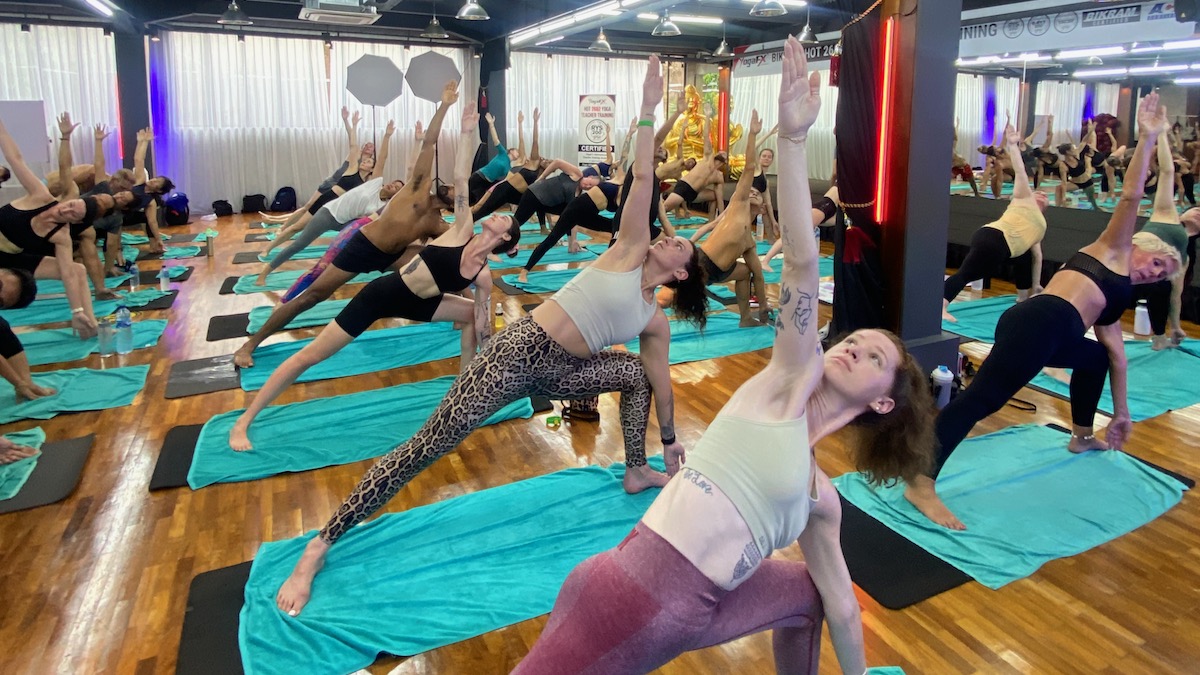
The benefits of practicing Original Hot Yoga extend beyond physical fitness, encompassing mental and emotional well-being as well. Numerous studies and anecdotal evidence highlight the positive impact of hot yoga on various aspects of health. Here are five key benefits:
Improved Flexibility and Strength
The heat in Original Hot Yoga allows muscles to warm up quickly, increasing their elasticity and reducing the risk of injury. This leads to improved flexibility, which can enhance overall physical performance and reduce muscle soreness. The 26 postures are designed to work all major muscle groups, building strength and endurance. Regular practice can lead to toned muscles and improved overall body strength.
A study published in the “Journal of Strength and Conditioning Research” found that participants in a hot yoga program showed significant improvements in flexibility, strength, and balance after eight weeks of practice.
Cardiovascular and Respiratory Health
The cardiovascular system is challenged by the heat and the physical demands of the postures, leading to improved heart health and increased stamina. The breathing exercises incorporated into the practice help to increase lung capacity and improve overall respiratory function.
Research from the American Council on Exercise (ACE) demonstrated that hot yoga can improve cardiovascular health, with participants experiencing heart rate and calorie-burning benefits similar to those of brisk walking.
Weight Management and Detoxification
The intense physical activity and heat in Original Hot Yoga can help to boost metabolism and burn calories, aiding in weight loss and weight management. The heated environment promotes sweating, which is believed to aid in detoxification by flushing out toxins through the skin. This can lead to improved skin health and a sense of rejuvenation.
Mental Clarity and Stress Relief
The combination of physical exertion and focused breathing in Original Hot Yoga can lead to a meditative state, reducing stress and promoting mental clarity. Many practitioners report feeling a sense of calm and mental well-being after a class. A study conducted by Massachusetts General Hospital’s Depression Clinical and Research Program found that participants who practiced Bikram Yoga reported reductions in symptoms of depression.
The structured environment and physical exertion, combined with the meditative aspects of yoga, contributed to these mental health benefits. Additionally, a study in the “Journal of Alternative and Complementary Medicine” reported that hot yoga significantly reduced perceived stress levels in participants.
Enhanced Balance, Coordination, and Posture
Many of the postures in Original Hot Yoga require balance and coordination, which can improve proprioception and overall body awareness. The postures are designed to align and strengthen the spine, leading to better posture and reduced back pain. Regular practice enhances overall body alignment, promotes relaxation, and improves focus and concentration, contributing to better physical and mental health.
In summary, Original Hot Yoga offers a comprehensive approach to improving physical fitness, mental clarity, and emotional well-being. Its unique combination of heat, structured postures, and breathing exercises provides practitioners with numerous benefits that extend beyond the yoga mat.
Controversies and Criticisms
Despite its many benefits, Original Hot Yoga has not been without controversy. Bikram Choudhury, the founder, has faced numerous legal issues and allegations of sexual misconduct. These allegations have led to a tarnished reputation for Bikram and have caused many practitioners and studios to distance themselves from his name while continuing to teach the sequence.
Additionally, some critics argue that practicing yoga in such extreme heat can be dangerous, particularly for individuals with certain health conditions such as heart problems or heat intolerance. It is important for practitioners to listen to their bodies, stay hydrated, and consult with a healthcare professional if they have any concerns.
Modern Adaptations

While some studios continue to adhere strictly to the original format of Bikram Yoga, others have adapted the practice to cater to different preferences and needs. Variations in temperature, class length, and posture sequences have been introduced to make the practice more accessible to a wider audience. Some studios offer shorter classes, lower temperatures, or incorporate additional postures and breathing exercises to create a more varied practice.
Original Hot Yoga Conclusion
Original Hot Yoga, with its fixed sequence of 26 postures and 2 breathing exercises performed in a heated room, offers a unique and challenging practice that can provide numerous physical, mental, and emotional benefits. While it has faced its share of controversies, the core practice remains a powerful tool for improving overall health and well-being. Whether you are seeking to increase flexibility, build strength, reduce stress, or detoxify your body, Original Hot Yoga offers a comprehensive and transformative experience.
As with any physical activity, it is important to approach Original Hot Yoga with mindfulness and caution. Listening to your body, staying hydrated, and seeking guidance from qualified instructors can help you to safely enjoy the many benefits of this dynamic and invigorating practice.
